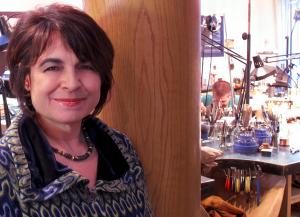
Susan Cummins: Barbara, what is your background, and how did you decide to become a jeweler?
Barbara Heinrich: I grew up on a vineyard in Germany and always made jewelry from the time I was little. When it was time to decide on a field of study, I thought I should study something “harder,” such as architecture or product design, but my father convinced me to pursue what was most natural to me, making jewelry.
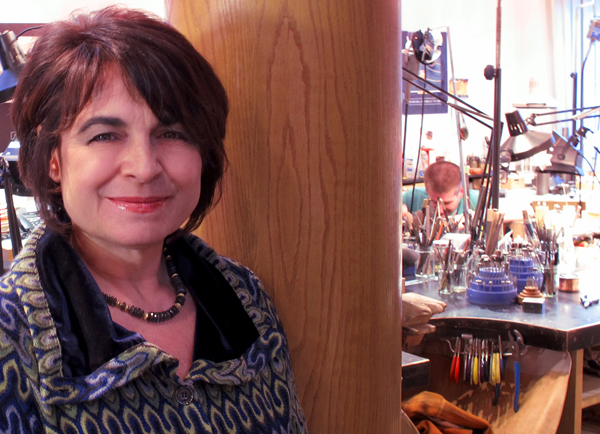
Susan Cummins: Barbara, what is your background, and how did you decide to become a jeweler?
Barbara Heinrich: I grew up on a vineyard in Germany and always made jewelry from the time I was little. When it was time to decide on a field of study, I thought I should study something “harder,” such as architecture or product design, but my father convinced me to pursue what was most natural to me, making jewelry.
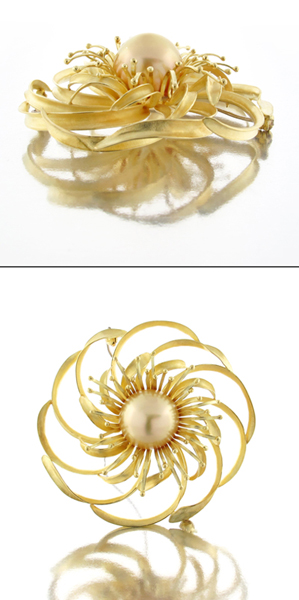
I had a very rigorous three-year apprenticeship with a master goldsmith in a Waldorf setting. We were not allowed to talk or to listen to music at all during the day. We were trained in “listening” to the piece we were working on and allowing the piece to develop as we were working on it through this form of interaction. What was very hard then has served me well over time, and I still like to work in silence.
My university studies at the Pforzheim Academy were wonderful in that we had excellent drawing, painting, and sculpture professors who laid the foundation for our artistic expression. We did a lot of free experimenting and discussed our work in semantics and aesthetics classes. It seemed to me that the focus was on becoming an artist first before becoming a graduate of jewelry design. I must emphasize, however, that we had outstanding experts teach us—a silversmith, a goldsmith, an enamellist, a master of engraving, a master of repoussé, a gemologist, a master of stone setting—and above all of them stood the design professor. Each craftsperson was an expert in his or her field, and the level of teaching was very professional and demanding.
I appreciate most that these seven years of training were very thorough and seemed unrushed. When I graduated, I felt very ready to work anywhere, including in my own studio.
The title of your show at de novo is Ribbons of Gold. Can you explain the inspiration for this body of work?
Ribbons of Gold was inspired by some experiments I did when I studied in Pforzheim. One weekend, eight jewelry students went to a farmhouse for a retreat. We made jewelry from found objects, and one of my projects was a blade of grass wrapped around the finger, the arm, and the neck. This theme lay dormant until about three years ago when the jump in the price of gold demanded a complete redesign of my work. With the work experience I gained through 25 years of making jewelry, I was able to translate this idea into a series of rings, earrings, bracelets, etc., without losing the fluidity and lightness of the original image.
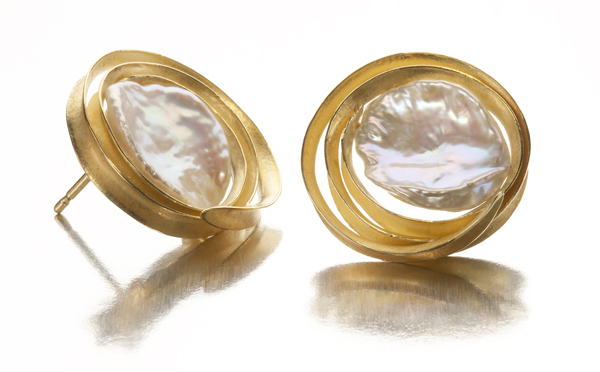
I have worked in almost every material over the years, but once I started working in gold, I found my metal of choice. I like its warmth and how it can be worked—from forging, chasing, and stone setting to the many wonderful surfaces it holds, such as matte finishes, brushed finishes, or high polished finishes. I like to combine all of these in my work and have become sort of a finishing fetishist. I often spend as much time finishing a piece as I do fabricating it.
You once told me that you like to design during periods when you don’t sleep for a few days. Can you explain why that works for you?
This has changed a little in the meantime, but I used to push my ability to visualize and to work out new designs in a state of overtiredness. I have found a new way of streaming design ideas by putting myself into a wakeful creative daydreaming state. It does not wear me out as much. I take the ideas from there and briefly sketch them before working them out in detail with my jewelers.
Do you think jewelry carries meaning, and in what ways?
Of course! How can it not? It is a language. Forms, colors, and materials are the vocabulary we use to make statements. The meaning needs to be discerned and interpreted, but I have found that many people are able to receive the messages I put into the work. I find that my artistic sensibility and expression speaks rather clearly to the audience.
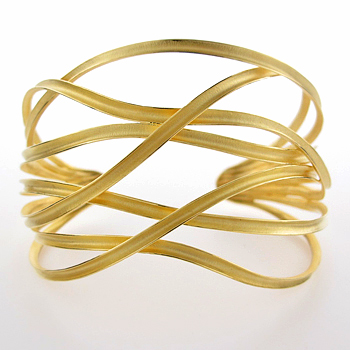
Can you describe how your studio looks and how it is organized?
I always wanted a studio that is not what most jewelry places are—dark, small, and messy. I wanted a light, neat studio with tall ceilings and a lot of natural light. I was able to build my dream studio more than 20 years ago on our property, and I still like it the same now as I did then.
What is your favorite book about jewelry?
Erhard Brehpol’s Theorie und Praxis des Goldschmieds (Theory and Practice of Goldsmithing).
From what I can tell, you work hard all the time. So I am wondering, do you have any guilty pleasures? Can you share one with me?
My most guilty pleasure is my weakness for buying gemstones without restraint. I have to physically give myself a time limit of how many minutes I allow myself to shop. Otherwise, I end up with year’s worth of gemstones in a short amount of time.
Thank you.




